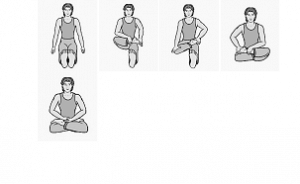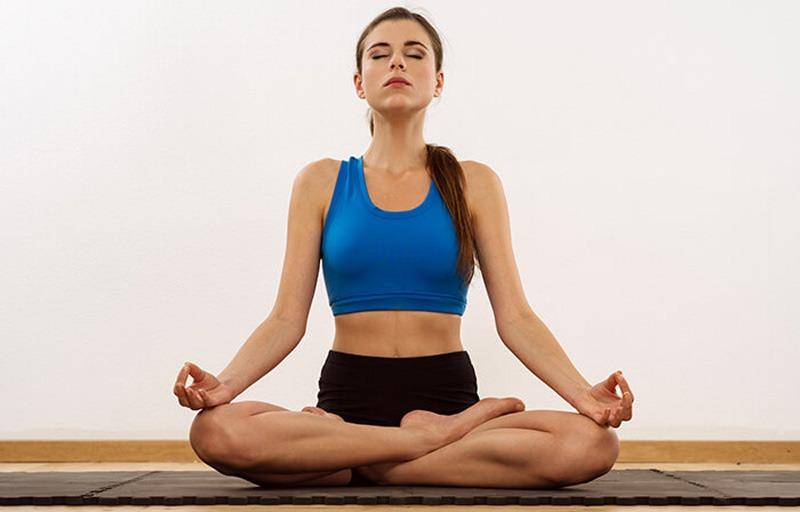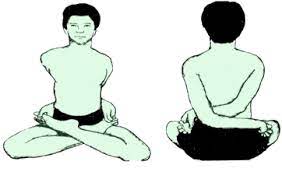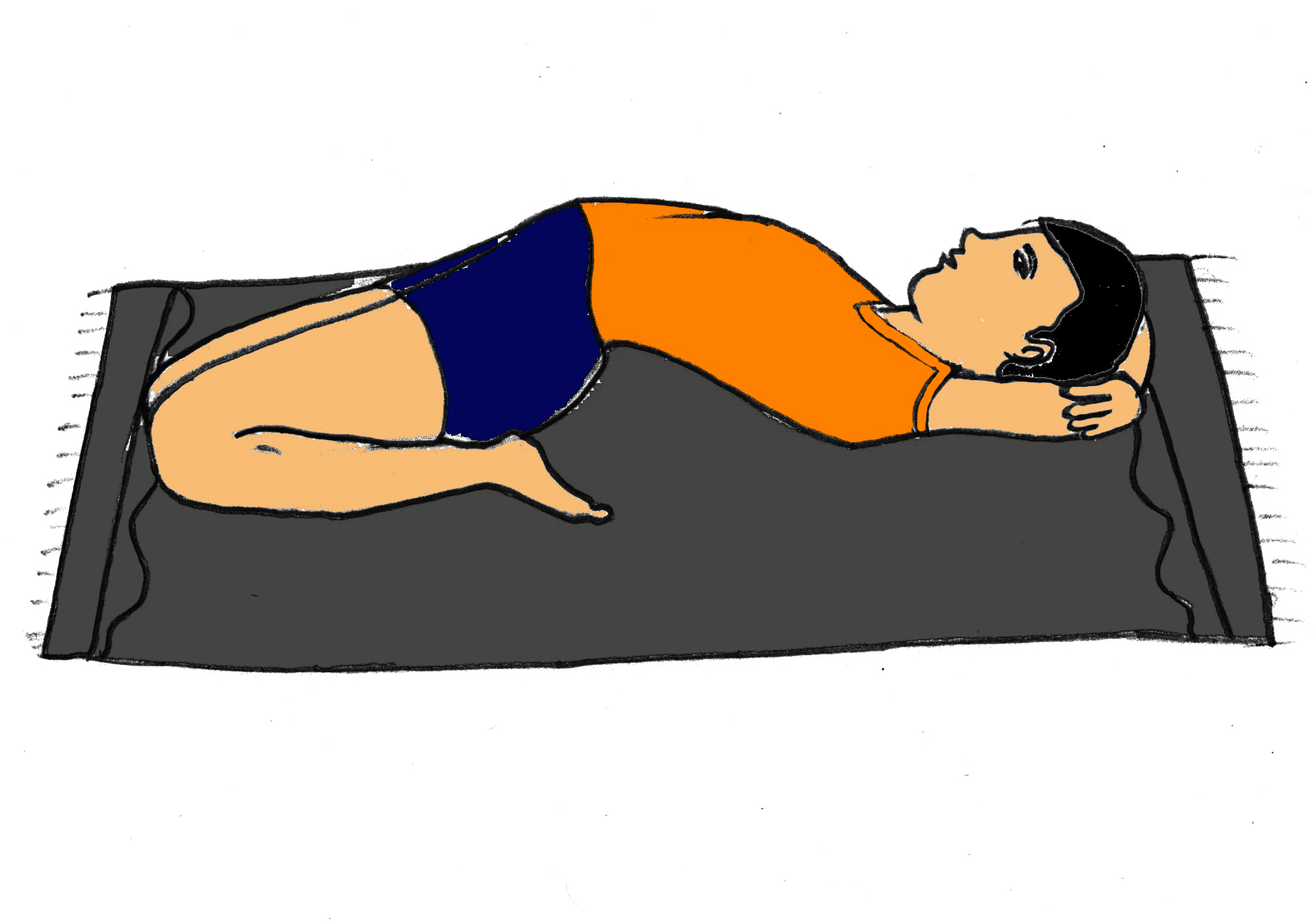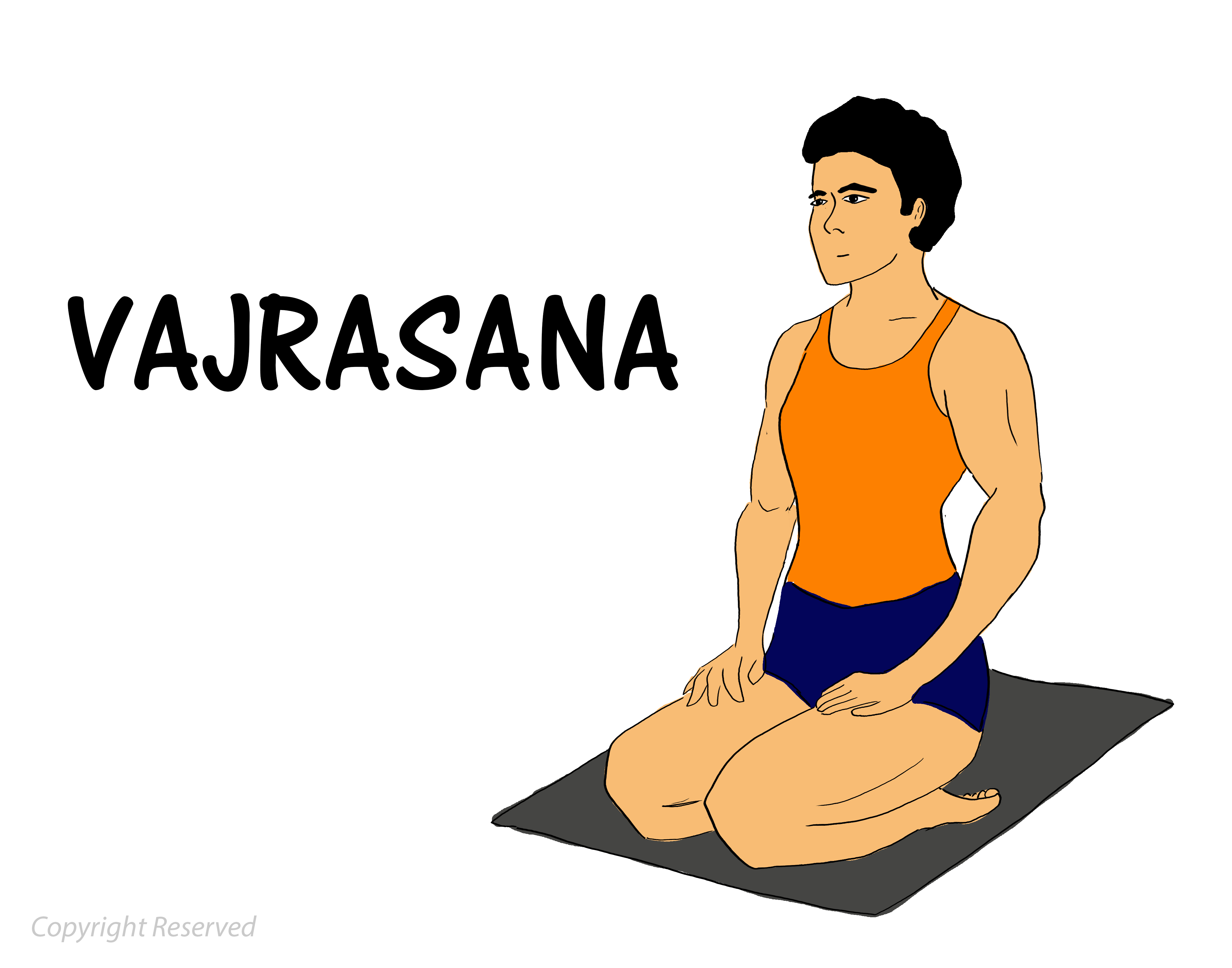Padmasana
Padmasana is an asana included in Hatha Yoga literature that has tremendous spiritual importance for the practitioner. The name of the asana comes from Padma, or the lotus flower which is an eternally important spiritual symbol that has importance across cultural and religious barriers as well as time. The lotus flower has been associated with rebirth, detachment, purity, beauty, enlightenment, spirituality, cosmic renewal and material wealth over the centuries. From India to Egypt, the lotus flower has been closely linked with numerous mythologies and spiritual icons. Goddess Lakshmi, Lord Vishnu and Lord Ganesha have been observed to be seated on the lotus flower. In Buddhism, legends say that a lotus bloomed everywhere Buddha set his foot. So let’s have a closer look at the spiritual and cosmic importance of Padmasana and how it can be beneficial to a practitioner.
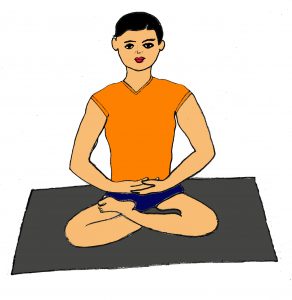 Padmasana
Padmasana
Steps of Padmasana
Here are the main steps associated with Padmasana.
- Sit on a floor or surface of the ground while keeping your spine perfectly erect and the legs stretched out.
- Now bend your right knee gently and use the hands to properly put it on the left thigh. Make sure that your soles point upward while your heels remain close to the abdomen.
- Repeat the same using the other leg.
- After you have both your legs crossed perfectly and feet placed comfortably on the opposite thighs, put your hands into one specific mudra that you prefer and set it in position. The hands must be placed on your knees.
- Maintain your head in a perfectly straight position while keeping your the spine erect all the time.
- Breathe in a deep and long manner.
- Keep your body in this position for at least a few minutes before you release the body.
- Now repeat this pose with your other leg.
One of the most important things that you need to master while practicing Padmasana is the Mudras. Mudras help to activate your body’s energy flow. Their overall effects get multiplied if you practice them with Padmasana. Some of the mudras that you can practice with Padmasana include Adi Mudra, Chinmaya Mudra, Brahma Mudra and Chin Mudra. Each of these Mudras is different and offer distinct benefits of their own. While you practice a particular mudra, make sure that you feel the flow of energy that goes with it.
Preparatory Poses
These are the main preparatory poses that should be practiced before Padmasana.
- Virasana
- Janu Sirsasana
- Baddha Koṇāsana
- Ardha Matsyendrāsana
Follow up poses
Once you perform Padmasana, you should practice these follow up poses.
- Supta Padangusthasana
- Adho Mukha Svanasana
Tips for performing Padmasana
Padmasana is one of the easiest and simplest asanas that can be practiced by men and women of all age groups. However, it is important that you do not underestimate this asana at all and practice it under the direct guidance and supervision of an experienced yoga master. Even though it might look very simple, the truth is that it is not.
As someone who is new to Padmasana, you could accidentally overstretch your ankle while trying to as get into this pose. In order to avoid this, it is important that you push your foot’s inner side against your arm’s upper part so that the stretch of your ankle is perfectly balanced. Additionally, as you bring the foot close to the opposite groin, it is important to ensure that the outer and inner ankle stretches to the same extent.
It is important to note that this asana works as a meditative pose. Hence it is best to practice it in the morning. However, you can also perform this asana in the evening. While it is not necessary that Padmasana must be performed in an empty stomach, it is always better to maintain a gap of about 4 to 6 hours before actually performing this asana just like with most other asanas. The bowels should also be kept clean before performing this asana.
The science of Padmasana
Padmasana is one of the best asanas to remove anxiousness and confusion from the body and mind. It can have a powerful grounding effect on the practitioner. It can have an instant rooting effect on the femurs and settle the groin area. You can feel that your energy levels go up and feel a hint of light pass via your midline. It can also open the heart and the hip area which can offer many spiritual and physical benefits. This makes it one of the finest meditative poses.
When you perform this asana, your feet’s position and arrangement resembles the beautiful petals of a lotus flower. Just like lotus flowers blossom from the mud, your day to day mundane life is also like mud and dirt. However, with the practice of Padmasana and yoga in general, you can transform yourself into a bright and beautiful flower that is alive and awakened to every moment. Padmasana can work effectively on multiple Chakras, thus helping them to attain balance and harmony.
Benefits of Padmasana
These are the main health benefits of practicing Padmasana.
- Padmasana works powerfully when you are looking to calm the brain and relax your mind. It can also enhance mental concentration in a major way.
- It can activate the pelvis, the spine, the bladder and the abdomen.
- The ankles and knees can be stretched efficiently with Padmasana.
- Sciatica and menstrual issues can be properly managed when this asana is regularly practiced.
- Pregnant women can also practice this asana to have a hassle-free and easy delivery.
- Padmasana can open up the hips and make them truly flexible.
- This Padmasana can assist in preserving the vital fluids within the body.
- It can also help in the prevention of abdominal diseases as well as multiple female disorders that are related to the reproductive organs.
- Practicing this asana can help in boosting hunger.
- It can help in reducing unwanted fat from thighs and hips.
- Practicing Padmasana regularly can improve overall posture.
- This asana can help to awaken the various Chakras which can lead to heightened awareness of various things.
- This asana can help to regulate and manage blood pressure.
- Energy levels can be positively restored by practicing this asana on a regular basis.
- It is a great asana for you if you are looking to improve your digestion.
Precautions and contraindications associated with Padmasana
Follow these cautions while practicing Padmasana.
- Do not perform this asana in case you have an ankle or knee injury.
- It is best not to do this asana if you are suffering from a case of severe back pain.
- Make sure that you consult your doctor before performing Padmasana if you have recently undergone knee surgery.
- Do not practice this asana if you have a leg sprain.
So now that you are aware of the benefits of Padmasana, go ahead and start practicing it in your day to day life.
References

VI FITKIT Yoga Mat Anti Skid EVA Yoga mat with Bag for Gym Workout and Flooring Exercise Long Size Yoga Mat for Men and Women (Color - Blue)
Price: Rs 399.00 FREE Delivery. Details
About The Product
- With high density foam material, The thick ( 3 mm thick ) premium mat with comfort cushion spine, hips, knees and elbows on hard floors. This makes it a perfect size for both men & women.
- SWEAT RESISTANT AND WASHABLE YOGA MAT - Next time don’t stress when you sweat while doing yoga. The yoga mat is completely sweat resistant and has a Moisture resistant Technology which makes the mat easily washable with soap and water.
- This Yoga Mat is designed to give you the most comfortable yoga experience possible. The extra thick mat protects joints without compromising support or stability
- DURABLE & ECO FRIENDLY YOGA MAT - The EVA material is extremely durable and eco friendly. It lasts upto 5 times more than a regular plasticky mat! The material is biodegradable and free from PVC, silicon, latex and other toxic materials. We believe in creating quality and Eco friendly products for our customers!
- Care Tips: Do not place in washing machine or dryer, Please clean before and after using, clean regularly and keep it dry for healthy using.
